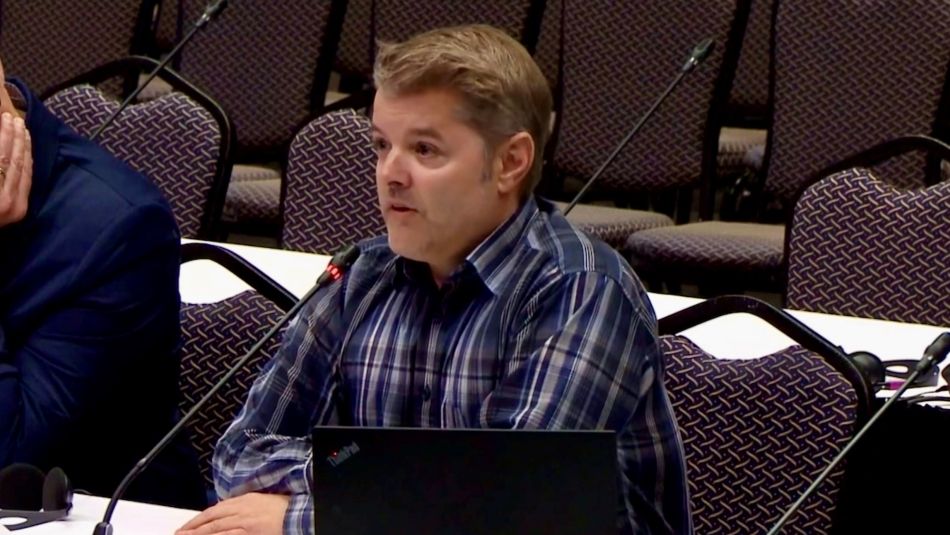
Share
Appearing before the Canadian Radio-television and Telecommunications Commission (CRTC) on May 27, Unifor Media Director Randy Kitt testified that in wake of U.S. President Donald Trump’s trade war there is a growing need to stand up for Canadian content, protect our sovereignty and make the tough decisions necessary to save our Canadian media industry, including local news.
“What makes us Canadian can be debated, because we are a diverse country, but, that we are proudly Canadian, uniquely Canadian, and feeling more separated than ever from our southern neighbours is no longer in question,” said Kitt during his deputation.
Kitt said the media sector is in crisis because the CRTC failed to regulate streaming services at their introduction in 1999 and again in 2009, when the Commission regulated streamers with exemptions instead of meaningful guideposts.
In the last two-and-a-half years, the media sector has cut 482 Unifor members in broadcast television, most in local news, with the loss of 376 members in the past year. In 2013, when Unifor was formed, the media sector had 13,000 members; 13 years later, the union has 3,000 fewer members.
This decline, stated Kitt, is largely due to the failure to recognize the damage foreign broadcasters could do to the media industry and the failure to regulate them. The answer is a two-prong approach – meaningful regulation followed by meaningful support.
Kitt, who attended the hearing with Unifor Researcher Marc Hollin in Gatineau, Que., said as part of ‘regulate and support,’ Unifor recommends that the producer and key creative positions remain Canadian for a production to be deemed Canadian and that subjective, “Canadian-ness” should not play a factor in this determination. Also, Canadians should maintain ownership of the intellectual property to ensure the continued viability of our industries.
Unifor also recommends that, in order to level the playing field, the Commission should impose 30% Canadian Programming Expenditures requirements on foreign broadcasters.
Unifor submits that supporting the creation of high-quality, first-run news, and especially local news, should be a top priority for the CRTC.
“[Foreign broadcasters] should absolutely have to pay into funds that support local news, because Canadian broadcasters have always had to, and because it is the very existence of foreign online broadcasters in this country that has contributed to the decline of local news and eroded our democracy,” added Kitt in his deputation.
Leveling the playing field between foreign broadcasters and Canadian broadcasters should not mean less regulation for Canadian broadcasters or less local news requirements, but rather meaningful regulation that supports a vibrant news industry.
Specifically, Unifor recommends that the Commission should impose the following conditions for funding eligibility for the Independent Local News Fund or any other news fund monies:
• Staffing minimums for journalists and news creators on a proportionate basis to the funding, located in local markets, to serve those markets.
• Requiring the creation and distribution of local news seven days a week, including a minimum number of first run original local news programming hours proportional to the funding in the market.
• Ensuring that editorial decisions are made in that market and not centralized
• Ensuring that a news station or news bureau be operated in that market.
• Prevent deregulating news-related policies and ensure that any flexibility does not result in reduced oversight or or concessions.
“We also must come to terms with the fact that big players like Bell and Rogers are not too big to support. We cannot allow them to continually lose money on local news and then expect them to deliver the high-quality local news we have come to expect from them,” said Kitt.
“It’s time that we all recognize that the financial model for the creation of local news is broken, and a new model for sustainable, ongoing and adequate funding will have to be available for all Canadian news businesses.”
Unifor represents 10,000 media workers, including 5,000 members in the broadcast and film industries.


